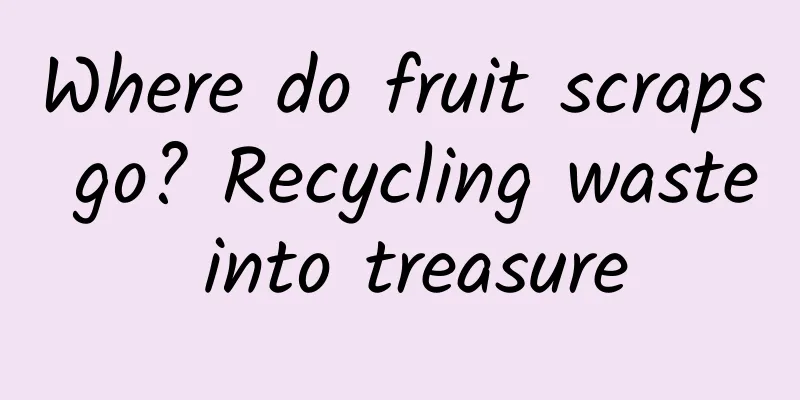Where do fruit scraps go? Recycling waste into treasure

|
In our daily lives, we enjoy the deliciousness and nutrition brought by some tropical fruits, but often ignore their remaining stems, leaves, shells and residues. For example, pineapples, coconuts, bananas, sugar cane, cassava, etc., through scientific processing and innovative applications, they are all valuable resources that can be turned into treasures. Pineapple A natural fiber extracted from the leaves of the pineapple plant, scientifically known as pineapple leaf fiber, has excellent mechanical properties such as high strength, good moisture resistance and biodegradability. Pineapple fiber has unique physical and chemical properties and shows wide application potential in many fields such as textile industry, papermaking industry and biomaterials. banana Banana fiber, mainly derived from the stems and leaves of banana trees, is a natural and sustainable textile material. With the increasing awareness of environmental protection, it is regarded as an ideal green material. The main component of banana fiber is cellulose, which has excellent mechanical properties and biodegradability. In addition to being used in the textile and clothing and household goods industries, it can also be used for industrial materials and composite materials. Banana peels can also be made into feed with high nutritional value through a certain fermentation process. coconut Coconut shell fiber, also known as coconut fiber or coconut bran fiber, is a natural fiber extracted from the fiber layer inside the coconut shell. This fiber has many properties, including high strength, durability, hygroscopicity and antimicrobial properties, biodegradability, and is very environmentally friendly. It has a wide range of applications in many fields. Coconut shells are commonly used in handicrafts and soil for home gardening, which are deeply loved by people. In industry, coconut shells can also be used to make textile products, medical and health products, building materials, and environmentally friendly materials after being crushed, fiber extracted, dried, and processed. sugar cane Sugarcane is delicious, but only the juice squeezed out can be eaten, and it is only a small part of the sugarcane production. Most of the sugarcane is used to produce sugar and other sweeteners. However, a large amount of residues generated during sugarcane processing, including bagasse, sugarcane leaves and sugarcane skins, are often ignored or discarded. In fact, these residues have many potential uses and can be turned into treasures through innovative technologies and methods. Sugarcane is rich in cellulose and hemicellulose, which can be converted into paper, biofuel, bioplastics, etc. through chemical or biological treatment. In addition, bagasse can also produce bioethanol through a fermentation process, or be used in the construction industry as a composite reinforcement material. Cassava Cassava residue is the solid residue left after extracting cassava starch. It contains high cellulose and protein and can be converted into feed for poultry and livestock through a fermentation process. At the same time, cassava residue can also be used as a clean energy source to produce biogas through anaerobic digestion. Research and development of extraction machinery Improve extraction efficiency : Improve the extraction efficiency of useful components such as fiber by improving mechanical equipment. Enhanced product performance : Improve the performance of residue-based products through chemical and physical modifications. Expand application areas : explore the application of residues in new energy, new materials and other fields. Promoting circular economy : Promoting the development of circular economy through comprehensive utilization of agricultural residues. Turning these residues into treasures not only reduces environmental pollution, but also opens up new ways to utilize resources. With the advancement of science and technology, plant fiber extraction machinery and equipment have been successfully developed, but there are still problems with low efficiency and quality. I believe that with the advancement of technology and the increasing demand for sustainable materials, the utilization prospects of these residues are broad. Future research and development will continue to promote the development of this field and achieve more innovations and breakthroughs. |
Recommend
Tips for creating Facebook homepage promotion ads!
Although Facebook ads look very tempting, the mon...
Don't stop me, I'll go buy some fruit after work! I'm so strong now!
One of the happiest things in summer Just lying o...
Four scenarios that are best suited for RxJava
RxJava is a very popular functional responsive pr...
3 basic elements of community operation and 11 cases
Community is an area that almost all Internet pro...
What is the relationship between duck shit scented tea and duck shit?
The fourth issue of Eight Little-Known Facts is h...
What happened to the BeiDou-3 global satellite navigation system? What is the specific situation?
July 31, 2020 is a big day worth remembering for ...
The most comprehensive practical SOP for community operations!
First of all, a few points should be made clear: ...
2021 Douyin Store has no source of goods, Douyin Store novice practical class (video course)
2021 Douyin Store has no source of goods, Douyin ...
Notes on the pitfalls of Android immersive status bar
Some friends may think that the term "immers...
First-line traders practice huge Qianchuan tutorial from 0 to 1
First of all, let us understand what is Juliang Q...
Talk about the 7 steps of event planning
I've heard such a little story. Xiao Zhang is...
Analysis of 11 cases and 4 logical points of growth hacking!
The 4 key points of growth hacking: Providing hig...
Top 10 New Media Moments of 2016
In 2016, the new media industry is still hot. Som...
In-depth analysis: the underlying logic of user needs
In the ups and downs of the business world, there...









